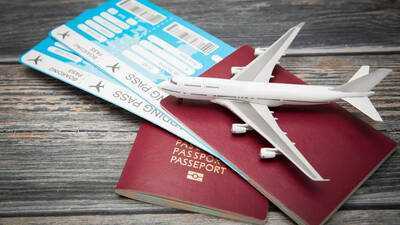Boarding pass secrets: The hidden codes that decide your seat, boarding time, and flight risk

Boarding passes are more than just a ticket to your seat; they’re filled with hidden details that can shape your entire travel experience. From determining where you sit to whether you’re at risk of being bumped off an overbooked flight, the codes on your pass carry surprising weight. One small number or letter could decide if you enjoy a smooth journey or face unexpected hassles. Understanding these codes gives you an edge, helping you board earlier, secure a better seat, and avoid stressful delays. Here’s what your boarding pass is really telling you, and why you should pay attention.
What the SEQ number on your boarding pass really means
One of the most important codes to look out for is the SEQ number, also known as the sequence number. Found at the bottom of your boarding pass, this code shows the order in which you checked in. For example, SEQ08 means you were the eighth person to check in for that flight.
On some airlines, seats are allocated based on check-in order. Early check-in often increases your chances of getting a better seat, while those who check in last may end up stuck with middle seats or other less desirable options.
If a flight is overbooked, a common practice in the airline industry, the SEQ number may also determine who gets bumped. Travellers who check in last are usually at higher risk of being moved to another flight, even if compensation is offered. This makes checking in early one of the simplest ways to protect your seat.
Other boarding pass codes that affect your journey
Aside from the SEQ number, boarding passes feature other codes that can impact your travel experience. A common one is the boarding group number , used by airlines such as Air Canada and Finnair. Boarding groups are called in order at the gate and typically prioritise families with children, passengers with disabilities, and premium-class travellers. Economy passengers are grouped based on check-in or ticket type, with earlier boarding offering better chances of finding overhead bin space for carry-on bags.
The "SSSS" code on your boarding pass stands for Secondary Security Screening Selection, a designation used by the
U.S. Transportation Security Administration (TSA) to identify passengers who require additional security screening before boarding their flight. While random in many cases, SSSS is more common for international flights or unusual travel patterns, and it can delay boarding.
The role of booking reference numbers (PNR) in your flight
Every boarding pass also includes a Passenger Name Record (PNR), which is a six-character alphanumeric code unique to you. According to
US Customs and Border Portection, this number is more than just a booking reference—it holds your full travel details. From seat assignments and baggage allowances to meal preferences and frequent flyer status, the PNR identifies you as a unique passenger, even if someone else on your flight shares your name.
Because your PNR links to personal travel information, keeping it secure is essential. Anyone with access to this code could potentially look up your flight details, so avoid posting photos of your boarding pass on social media without hiding it.
Why understanding boarding pass codes matters for travellers
Most people glance at their boarding pass without realising the hidden meaning behind the numbers and codes. Yet these details can influence your seat, your boarding time, and even how smooth your security process will be.
- Check in early to improve your chances of getting a better seat and avoid being bumped on overbooked flights.
- Know your boarding group so you’re prepared for when you’ll be called to board.
- Watch out for SSSS so you can allow extra time for security checks.
- Protect your PNR to keep your personal travel details safe.
By paying attention to these hidden codes, you can make smarter travel decisions and avoid unnecessary stress. Boarding passes may be small, but the information they carry can make a big difference in your flying experience.
Also Read:
TSA rolls out ‘One Stop Security’: What it means for international flights
 Boarding passes are more than just a ticket to your seat; they’re filled with hidden details that can shape your entire travel experience. From determining where you sit to whether you’re at risk of being bumped off an overbooked flight, the codes on your pass carry surprising weight. One small number or letter could decide if you enjoy a smooth journey or face unexpected hassles. Understanding these codes gives you an edge, helping you board earlier, secure a better seat, and avoid stressful delays. Here’s what your boarding pass is really telling you, and why you should pay attention.
Boarding passes are more than just a ticket to your seat; they’re filled with hidden details that can shape your entire travel experience. From determining where you sit to whether you’re at risk of being bumped off an overbooked flight, the codes on your pass carry surprising weight. One small number or letter could decide if you enjoy a smooth journey or face unexpected hassles. Understanding these codes gives you an edge, helping you board earlier, secure a better seat, and avoid stressful delays. Here’s what your boarding pass is really telling you, and why you should pay attention.